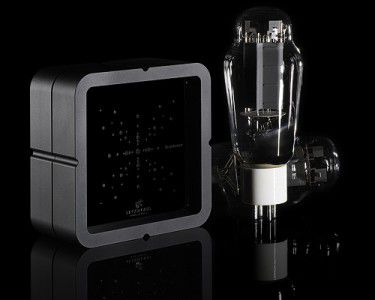From our front-page news:
The world of audio is a complicated one. You may know that you have a keen sense of hearing, and can pinpoint the most minuscule tones of a song, but if you want to discuss it with a fellow audiophile, there's unlikely to be a simple agreement on things. There's also those who think that they know it all when it comes to audio, but don't. Then of course there's those who love audio, and don't know the first thing about it, and that group includes me. Lastly, there's the group of people who are so mind-bogglingly rich, that they'll buy any piece of audio equipment, because they're told that it's amazing.
When I think of extreme high-end audio, I think of cables that are sold the world over. For most people, a $5 - $100 cable is going to suffice, so it's hard to imagine spending well over $1,000 or more on one. The question that's constantly brought up in a case like this is whether or not there's any type of distinguishable difference between the two. Remember the Pear incident two-years-ago? An organization promised a $1 million prize if anyone could tell the difference between Pear's and regular cables, and when a capable audiophile was found, Pear Cable backed out, for whatever reason.
Although I'm willing to bet that the vast majority of ultra-high-end audio equipment is good for nothing more than for a pat on the back for the owner, I'm sure there's some equipment that's actually not snake oil, and has a real use. When it comes to LessLoss' Blackbody, I'm quick to jump on an assumption that it's little more than a cool-looking door stop, and until we see a credible review of the product, that's how it shall remain.
You see, the Blackbody isn't a speaker, though it looks like one. Rather, it's a device (I'm not sure if it's powered or not, the article doesn't say) that targets the interaction of your audio equipment's circuitry with "ambient electromagnetic phenomena" and modifies its interplay. In short, it effects the circuitry inside your audio equipment, and because of it's particle interaction, it's touted as being able to pass through metal, plastic, wood and other surfaces. Somehow, fiddling with the very properties of the circuitry, the sound in the room improves.
I won't go on, but what I should mention is that the device sells for $959, and it's recommended that you purchase three if you have a proper audio setup and want the best results. You can read a lot more at the site's product page below, but prepare to laugh or cry. It depends on your personality.

From the front side of the Blackbody, the coverage angle is 35 degrees going outwards from the middle of the star pattern. The more proximate the Blackbody’s coverage area is to your gear's inner circuitry, the more effective it will be: proximity and angle of coverage should coincide with as much inner circuitry as possible. A quick look inside your gear can help you get an idea of where the circuits are located within your gear. If possible, several Blackbodys should be used in tandem to maximize coverage and effectiveness.
Source: LessLoss Blackbody
When I think of extreme high-end audio, I think of cables that are sold the world over. For most people, a $5 - $100 cable is going to suffice, so it's hard to imagine spending well over $1,000 or more on one. The question that's constantly brought up in a case like this is whether or not there's any type of distinguishable difference between the two. Remember the Pear incident two-years-ago? An organization promised a $1 million prize if anyone could tell the difference between Pear's and regular cables, and when a capable audiophile was found, Pear Cable backed out, for whatever reason.
Although I'm willing to bet that the vast majority of ultra-high-end audio equipment is good for nothing more than for a pat on the back for the owner, I'm sure there's some equipment that's actually not snake oil, and has a real use. When it comes to LessLoss' Blackbody, I'm quick to jump on an assumption that it's little more than a cool-looking door stop, and until we see a credible review of the product, that's how it shall remain.
You see, the Blackbody isn't a speaker, though it looks like one. Rather, it's a device (I'm not sure if it's powered or not, the article doesn't say) that targets the interaction of your audio equipment's circuitry with "ambient electromagnetic phenomena" and modifies its interplay. In short, it effects the circuitry inside your audio equipment, and because of it's particle interaction, it's touted as being able to pass through metal, plastic, wood and other surfaces. Somehow, fiddling with the very properties of the circuitry, the sound in the room improves.
I won't go on, but what I should mention is that the device sells for $959, and it's recommended that you purchase three if you have a proper audio setup and want the best results. You can read a lot more at the site's product page below, but prepare to laugh or cry. It depends on your personality.

From the front side of the Blackbody, the coverage angle is 35 degrees going outwards from the middle of the star pattern. The more proximate the Blackbody’s coverage area is to your gear's inner circuitry, the more effective it will be: proximity and angle of coverage should coincide with as much inner circuitry as possible. A quick look inside your gear can help you get an idea of where the circuits are located within your gear. If possible, several Blackbodys should be used in tandem to maximize coverage and effectiveness.
Source: LessLoss Blackbody
